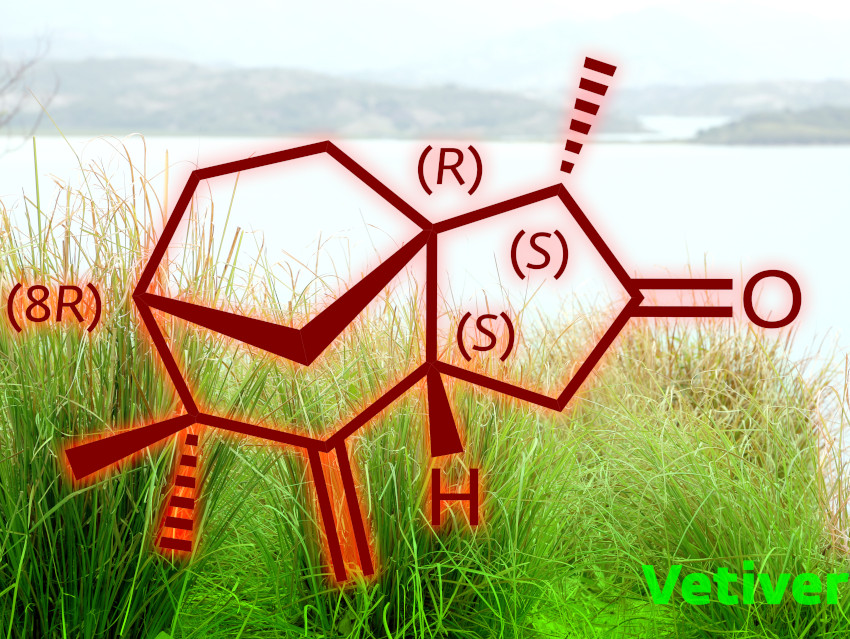Vetiver oil is a popular perfumery material and appears in over a third of all fragrances. It is a complex mixture of hundreds of molecules. The specific odorant responsible for its characteristic, woody-ambery smell had remained a mystery so far.
Ben List, Max-Planck Institute for Coal Research, Mülheim an der Ruhr, Germany, Philip Kraft, Givaudan Schweiz AG, Kemptthal, Switzerland, and colleagues have shown that (+)-2-epi-ziza-6(13)en-3-one (pictured) is the smelling principle of vetiver. The team performed an eleven-step total synthesis of the compound, featuring a new asymmetric organocatalytic Mukaiyama–Michael addition and an intramolecular Pauson–Khand cyclization.
The olfactory evaluation of the synthesized material showed a remarkably low odor threshold of 29 pg/L air. The compound’s smell has a pronounced typical vetiver character along with an accentuated dry and distinctly transparent woody-ambery note. Together, these properties show that the compound is the key contributor to the typical note of vetiver oil. It is over 150 times more potent in odor threshold than khusimone, which was previously considered the smelling principle of vetiver.
- The Odorous Principle of Vetiver Oil, Unveiled by Chemical Synthesis,
Benjamin List, Jie Ouyang, Hanyong Bae, Samuel Jordi, Quang Minh Dao, Sandro Dossenbach, Stefanie Dehn, Juilia Beatrice Lingnau, Chandra Kanta De, Philip Kraft,
Angew. Chem. Int. Ed. 2020.
https://doi.org/10.1002/anie.202014609




